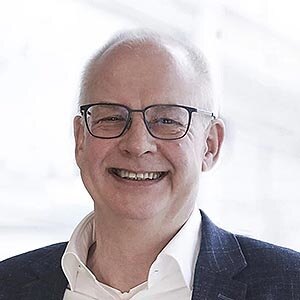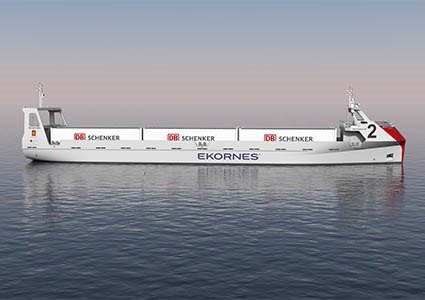
Ekornes is dedicated to delivering sustainable Scandinavian design
Founded in 1934, Ekornes has become the Nordic region’s largest furniture producer. With ten factories in five different countries, its global reach extends to 13 different countries by means of 19 sales offices and more than 4000 sales points. Its approximately 3400 employees help the business to penetrate 48 markets.
Headquartered in Sykkylven, on the west coast of Norway, the company designs and manufactures furniture products that are marketed under the brand names Stressless, Svane and IMG. Stressless is one of the world’s most well-known furniture brands, while Svane is most famous in Norway. IMG is marketed mainly in the USA and Australia.
Lars Wittemann, SVP Sourcing and Supply Chain shares more details about the Norwegian furniture manufacturer. “IMG is a discovery brand and mainly in the

white label product market, providing affordable comfort with good support. Stressless, on the other hand, is our premium consumer brand that is recognized and loved by millions of people. The Stressless product range includes an extensive collection of recliners and sofas, as well as dining room and office chairs. Every piece is crafted with focus on delivering high quality products.”
“In our factories, we focus on component production as well as furniture manufacturing, assembly, and retail distribution,” continues Jan Robert Lyngvaer, Logistics Director. “Lars’ team and my own work closely in terms of sourcing raw materials. The processes are highly integrated and we’re able to take good control of the manufacturing value chain. Ekornes is in a very good position in the market, especially in terms of our supplies of leather and textiles. We have worked with a core base of high-quality suppliers for several generations and have developed close relationships over the years. We have a good reputation, both as a customer and a vendor, and people are keen to work with us.”
Branching out into dining room products seemed like a natural progression for the organization and it has added complementary products to its existing portfolio. “We can offer the same color schemes and design elements for both living and dining spaces,” Jan continues. “This category has been very successful both in Central Europe and in the Nordics. We have also seen sales volume in this line picking up well in the UK. The Scandinavian style together with unparalleled comfort is proving very popular and lends itself well to the dining category.”
“Comfort is a key differentiator for us,” Lars adds. “The dining chairs boast a recline function, which is a key selling point.” In line with its focus on comfort, the company has recently introduced the first Stressless mattress products into the North American market. “This is currently a very small proportion of our business,” Jan explains. “We’ve just introduced display models into a selected range of furniture dealers and shops. It’s maybe a little too early to tell but we’re capitalizing on the Scandinavian design theme. We’re promoting our products not simply as being made in Norway but also as being reflective of our view on sustainable business behavior. This is a very competitive market, so we really need to perform very well from day one. That’s also why we ease into new segments, limiting volumes and opting for selective distribution.”
 Lars goes on to highlight the business’ approach to sustainability. “We focus on utilizing ocean freight for our distribution. Fifty-one percent of our volume for the group is exported from Norway. We have our own port at the factory site, so, we load our furniture directly into containers and they are loaded onto vessels going to the European, Asian and US markets. While shipping is the obvious choice for destinations further afield, we also use this method for Europe and the UK instead of relying on trucks.”
Lars goes on to highlight the business’ approach to sustainability. “We focus on utilizing ocean freight for our distribution. Fifty-one percent of our volume for the group is exported from Norway. We have our own port at the factory site, so, we load our furniture directly into containers and they are loaded onto vessels going to the European, Asian and US markets. While shipping is the obvious choice for destinations further afield, we also use this method for Europe and the UK instead of relying on trucks.”
“Our biggest factory,” continues Jan, “is in a remote location on the west coast of Norway. We try to mitigate the impact of this location by utilizing our unique resource which is access to our own harbor that is managed in cooperation with vessel operators. Using sea freight helps to reduce our transportation emissions, both in terms of exports and imports.”
“We’re obviously not able to transport everything by sea,” Lars explains. “As such, we have implemented biofuel truck transportation which involves two trailers switching mid-route and journey sharing. We have five shipments to and from Oslo per week that use this biofuel truck. We also require internal transport at our factories and have implemented an electrical distribution truck to support this requirement. Going back to our harbor initiative, to grow further we need to be able to move containers more frequently than we’re currently able. We are introducing an electric, autonomous barge to enable greater movement of volume.”
“This initiative is ready to be launched but we need to meet regulations and are working with professional partners to achieve this,” Jan adds. “We are amongst the top tier groups in Norway, influencing and driving these kinds of initiatives. Our strategy is to encourage the use of zero-emission vehicles across our supply chain. Our product offering is high end, and we want to be able to demonstrate a high degree of responsibility when it comes to how we transport components and distribute finished goods. Our consumers have a high level of awareness when it comes to the environmental impact of their purchasing decisions.”
While the furniture industry has always been a little bit volatile, those in the sector are used to dealing with the ups and downs. “It’s all about providing the right level of quality and service to match the price point,” Jan concludes. “I think we have a great foundation to continue our journey, modernize our portfolio and become more relevant to a new group of consumers. We produce premium furniture and a natural target for us is to be recognized among the major manufacturers for taking sustainability initiatives seriously.”